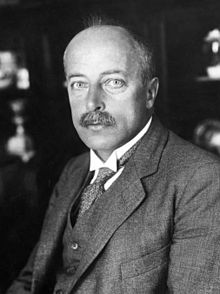
Max von Laue
- Nobelpreis für Physik 1914
Navigation auf uzh.ch

1898-1903 Studies of mathematics and physics at the universities of Strasbourg, Göttingen, Munich and Berlin
1903 Doctorate with Max Planck in Berlin on the "Theory of Interferences on Plane-Parallel Plates".
1906 Habilitation
1909 Privatdozent at the Institute for Theoretical Physics of the Ludwig-Maximilians-Universität Munich
1912-1914 Professor of Theoretical Physics at the University of Zurich
1914-1919 Professor of Theoretical Physics in Frankfurt
1919-1943 Professor in Berlin
1943 Professor Emeritus
In 1912 von Laue discovered ogether with Walter Friedrich and Paul Knipping the diffraction of X-rays on crystals. This proved that X-rays propagate like a wave. In addition, the diffraction patterns could be used for the first time to draw conclusions about the crystal structure. The method became very important for structural investigations in physics, chemistry and molecular biology. In addition, von Laue made research contributions to the theory of relativity, optics, thermodynamics and superconductivity.
1914: Nobel Prize for his discovery of X-ray diffraction through crystals
1932: Max Planck Medal
1953: Grand Cross of Merit with Star of the Federal Republic of Germany
1954: A newly discovered mineral is named LaueitLaueit in his honour
Max von Laue – Nobel Prize Biography
Nobel Lecture Address – Max von Laue Concerning the Detection of X-ray Interferences, 12 November 1915
Nobel Presentation Address – An account of Laue's work is by Professor G. Granqvist, Chairman of the Nobel Committee for Physics